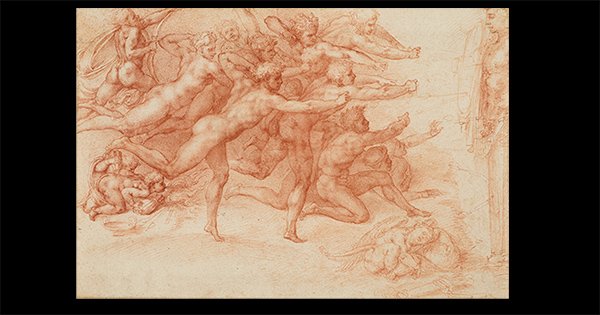Drawings by a Master
By Sandra Tyler, Editor-in-Chief

The Michelangelo: Divine Draftsman and Designer exhibition at the Met is a must-see. It ends February 12, so if you’re in the city, it’s worth the trip and braving the crowds. It’s a phenomenal showcase of more than two hundred works, including Michelangelo’s sculptures, and even a casting of his own hand shortly before he died.
The show also includes works by his teacher Domenico Ghirlandaio, and it’s certainly interesting to see this influence on the burgeoning artist, but the real time should be spent on Michelangelo’s own works—in total 133 drawings, ones rarely ever before displayed due to their great fragility, and not all in one venue.
In all of his drawings there is the sculptor at work—these drawings seem actually chiseled, not only as to their precision, but to the layering and deepening of line.
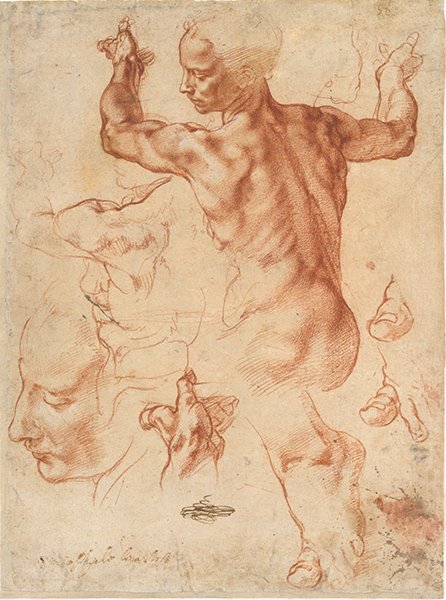
He worked in chalk and charcoal, which allowed for greater variations of depth and shadow, but what I found remarkable in these drawings is how he was able to achieve such precision of detail. One you would expect more from the fine point of a pen as in his ink drawings.
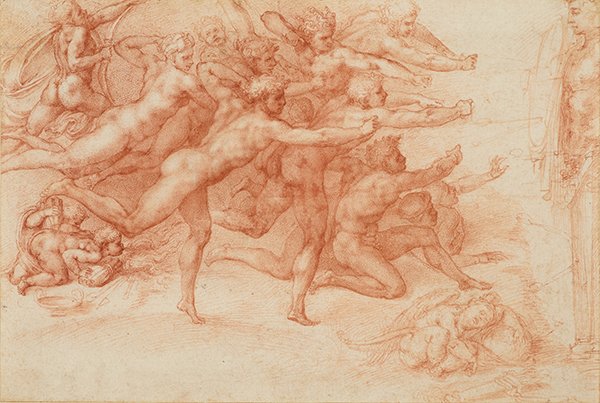
The exhibition is broken down not only chronologically, but also by various influences and concentrations, and here is where it resonates. One entire room is dedicated to studies for the Sistine Ceiling, another to portraiture, and still another to his architectural drawings later in life when he had settled in Rome. In these late architectural works, form still takes precedence, just as markedly three-dimensional as his figurative works.
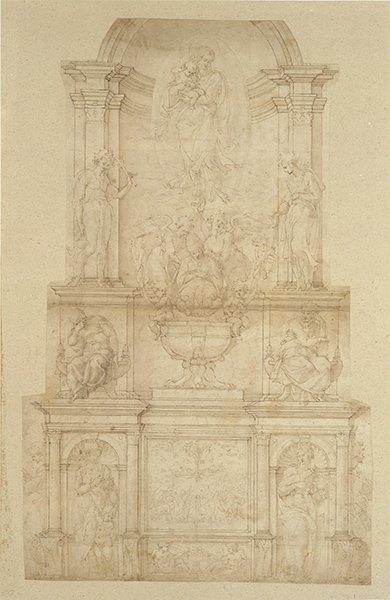
Of all the rooms, I found most engaging the collaboration with his protegee Sebastiano del Piombo. Rather, I was less interested in the collaborative part than in how they finally were artists of quite different sensibilities; while there certainly is Michelangelo’s influence, something else comes into greater relief in the comparison of these two artists: the poetic. It would be more toward the end of Michelangelo’s life when he actually became prolific in writing poetry, and when his drawings became imbued with a kind of raw emotion and spirituality. But that raw emotive perhaps is already kindling here in these earlier works, especially as to “Unfinished Cartoon for a Madonna and Child”—a surprisingly impressionist work. I backtracked through the crowds just so I could contemplate this piece longer. To me, it is hardly “unfinished,” but a deeply moving work, with the dramatic contrast of the richly detailed brown wash and gouache highlights against the more suggestive of the mother—how she is lightly sketched in just black and red chalk. There is something at once so enduring and tentative in her embrace:
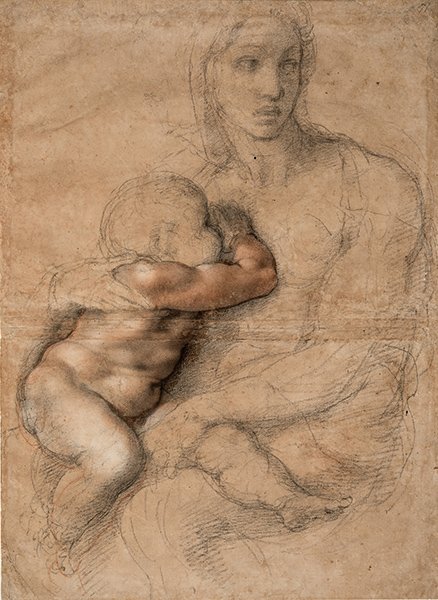
The piece alone is worth the trip before the exhibition closes, but in addition to his drawings, you will find several of his marble sculptures, his earliest painting, and even his letters as well as sonnets. For more information, go to https://www.metmuseum.org/
Copyright 2018 Woven Tale Press LLC. All Rights Reserved.

